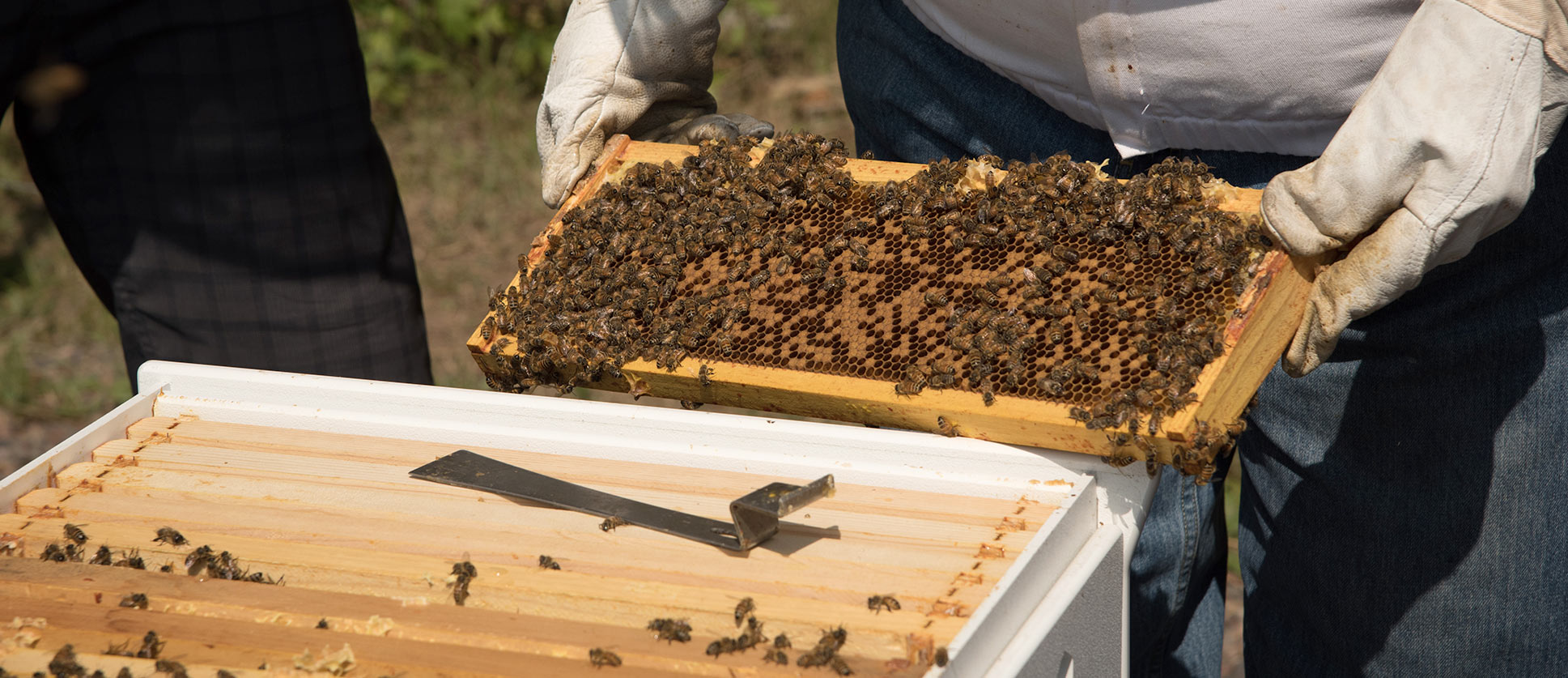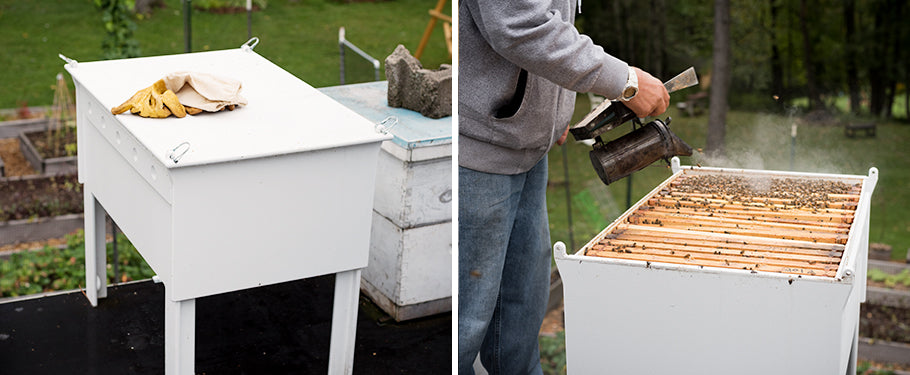
The idea to make a beehive started when Duluth based Jon Otis of Lake Superior Honey Co. came to us with a Top Bar horizontal bee hive idea. Residential beekeeping is growing in popularity, with the rate of beginner beekeepers more than doubling in the last decade, according to Fast Company and Bee Culture Magazine.
 This phenomenon dubbed ‘backyard beekeeping’ is a recreational activity that more and more people are getting into each spring as bee season comes along. Due to this increase, there is a need for more products to appease to the everyday beekeeper. Our take on the classic residential beehive adds an element of modern design to the backyard, while also functioning as a practical apiary. In true Loll fashion, this product had to be functional, high quality and contain a unique aesthetic. With a few years of design trials, upgrades, successes and failures, we created a foolproof residential beehive that we are very proud to introduce.
This phenomenon dubbed ‘backyard beekeeping’ is a recreational activity that more and more people are getting into each spring as bee season comes along. Due to this increase, there is a need for more products to appease to the everyday beekeeper. Our take on the classic residential beehive adds an element of modern design to the backyard, while also functioning as a practical apiary. In true Loll fashion, this product had to be functional, high quality and contain a unique aesthetic. With a few years of design trials, upgrades, successes and failures, we created a foolproof residential beehive that we are very proud to introduce.
 Something of upmost importance that we had to consider is that the beehive had to actually function as a legitimate apiary, not just be physically appealing. To start, we created a prototype hive that was tested out on a colony installed by Jon. Since this was possibly the first-ever hive made with recycled HDPE, we weren’t sure how it would perform or how the bees would react to the material. The beehive performed well, besides a black bear tipping over the hive, so we decided to take the next step by upgrading the design to further enhance the performance and style. We redesigned the hive with more intuitive ventilation, a lockable flat roof to save on cost and hungry bear attacks, taller legs for better ergonomics for the keeper, and a sturdier box for the internal wood frames while maintaining “bee space” overall. We continued testing the new hive with success throughout 2017 and 2018, and finally made the last subtle adjustments after the 2018 season.
Something of upmost importance that we had to consider is that the beehive had to actually function as a legitimate apiary, not just be physically appealing. To start, we created a prototype hive that was tested out on a colony installed by Jon. Since this was possibly the first-ever hive made with recycled HDPE, we weren’t sure how it would perform or how the bees would react to the material. The beehive performed well, besides a black bear tipping over the hive, so we decided to take the next step by upgrading the design to further enhance the performance and style. We redesigned the hive with more intuitive ventilation, a lockable flat roof to save on cost and hungry bear attacks, taller legs for better ergonomics for the keeper, and a sturdier box for the internal wood frames while maintaining “bee space” overall. We continued testing the new hive with success throughout 2017 and 2018, and finally made the last subtle adjustments after the 2018 season.
 We reached the final product, Bee Hive, by considering the needs of the bees and the beekeepers to accommodate them through performance, usability and style. Some of the key features include:
We reached the final product, Bee Hive, by considering the needs of the bees and the beekeepers to accommodate them through performance, usability and style. Some of the key features include:
- An easily adjustable door that allows the keeper to increase the size of the entrance if necessary.
- An internal separator that you can move as the colony grows.
- Three sliding ventilation bars that are visually adjustable.
- The ability to function with off the shelf 9⅛” wood frames.
- The channeled roof clips on with lockable pins and the overhang makes it extremely weather resistant.
- Propolis sticks to the plastic but the solid, non-porous dense plastic allows for cleaning when that time comes.





